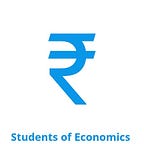Perfect Competition
By Komal Rafi
In real-world, we do not find a perfectly competitive market; it is just a hypothetical situation based on some assumption if a market has some these characteristics we can say that market is perfectly competitive. Here are the assumptions of a perfectly competitive market
It is the most important feature of a perfectly competitive market that both the sellers and the buyers have the perfect knowledge of the market condition, i.e. prices, product quality, technology, etc. Under this assumption, it is assumed that all producers have knowledge of production methods and technology. Not a single producer has any benefit over other producers regarding production methods and prices of raw material. Similarly, we assume that buyers also have perfect information about the goods sold in the market, prices of the goods and quality of the good, so that no seller can take advantage of the ignorance of the consumer by charging higher prices than others are by selling low quality good.
In a perfect competition there are a large number of buyers and sellers. A single seller cannot affect the market supply because of his very small share in the market thus, he has no authority to change the prevailing market prices and sell the goods on the given prices. On the other hand, a buyer is also unable to affect the market’s demand because of his minor share in the market and not in the position to affect the market prices.
The products sold in perfectly competitive markets are homogeneous. In simple words, it means products are similar, so it is easy for a buyer to switch to the substitutes and buy from any seller because of no differentiation in the product.
No Government Intervention
Factor of production are perfectly mobile in a perfectly competitive market it means that labour and capital can be moved from one industry to others without any restriction and at a minimum cost. Such mobility will also result in uniform prices in labour market and capital market because of the demand-supply price mechanism.
In perfect competition, there is no government intervention which implies absence of regulation and price control. Prices are determined by market forces and there is no externality exist in the market, it works efficiently without any intervention. In most practical market structures (Imperfect competition, monopoly) government need to intervene in some matters like patent rights, registration of new firms and in some cases price regulation.
A firm is said to be in equilibrium where its profit is maximized and there is no tendency of fluctuations. Under perfect competition, a firm is in equilibrium where Marginal revenue equals the Marginal cost (MR=MC). In the short-run, a firm can make a supernormal profit, some earn only normal profit, some may be facing loss in short-run and some with abnormal loss but in long, every firm earn a normal profit. Because of free entry and exit supernormal profit of some firms attract the new firms in it will create excess supply in the market as a result prices will decrease, and there left only normal share of profit for every firm in long run. Some firms which operating under abnormal loss in the short run may leave the market because in long run it is not possible to stay in the competition with loss; so there share of supply will reduce thus increasing the prices. Resultantly those firms which were facing loss may start earning normal profit. In the long run, every firm operating under perfect competition is productively and allocatively efficient.
No Barrier on Entry and Exit
Under perfect competition there is no barrier on exit and entry in the market, new firms can enter and old firms can leave the market any time, i.e.; no entry fee, no registration or patent rights required. In the presence of such condition, firms strive to achieve optimal factor combination to minimize their cost. This assumption implies that in this type of market firms make only normal profit in the long run.
Large number of Sellers and Buyers
Firm’s Equilibrium in Perfect Competition
Though perfect competition is an imaginary market structure and it does not exist anywhere in it complete form but some goods market have similarity with it.
In this market almost there is no difference in the products (milk, cheese) many sellers sell the product and no specific entry fee or patent rights are required to enter in this market
Agriculture market is an example of perfect competition all agriculture products are homogeneous, a number of buyers and seller exist in this market, almost same prices prevail, No barrier on entry and exit.
Gold Market fulfils some of the criteria which should be present in a perfectly competitive market .It has no barriers on entry and exit anyone can buy and sell gold, prices are determined by demand and supply forces and the product is identical.
In this market homogeneous product is sold and prices also determined by market forces, so the foreign exchange market also depicts a close picture of perfect competition.
Originally published at https://www.studentsofeconomics.com.
